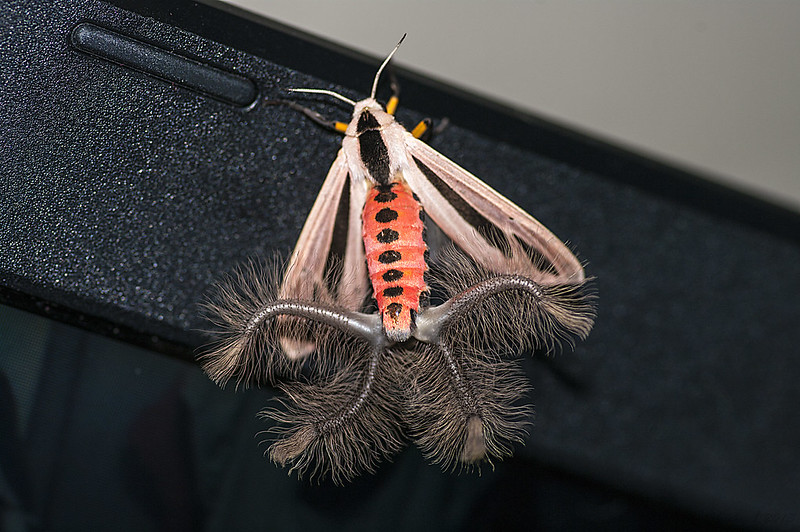
Creatonotos gangis Facts
- Perhaps most notably, the truly astonishing Creatonotos gangis remains one of the most visually distinctive Lepidoptera known to man. Unfortunately for those trying to pronounce it, the remarkable insect also has no generally accepted common name.
- The first official scientific recognition of the creature as a separate and distinct species took place in the late 18th century. That formal acknowledgement, like many others, occurred as a direct result of the renowned Swedish zoologist Carl Linnaeus.
- While it may be unknown to many, the incredible moth actually inhabits a moderately extensive range. Due to this unfortunate fact, along with an apparently sizeable and relatively stable population base, the IUCN currently has no listing for the insect.
- Although the adults remain completely harmless, the same situation does not hold true for the caterpillar form, however. In point of fact, this life stage of the surprising invertebrate very frequently causes severe damage to local pomegranate crops.
- Sadly, however, its fortunate Red List of Threatened Species status could potentially change in the very near future. This lamentable fact occurs for the same reason it does for numerous other species. That’s due to the continued progression of climate change.
Related Articles
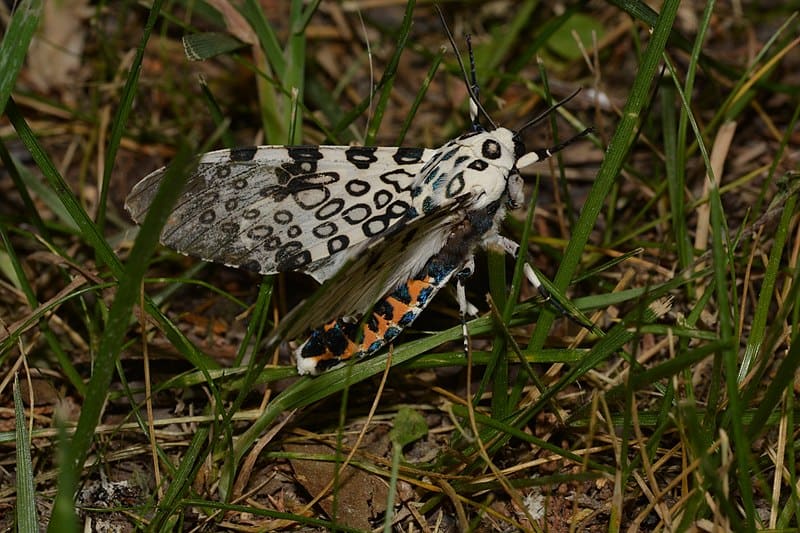
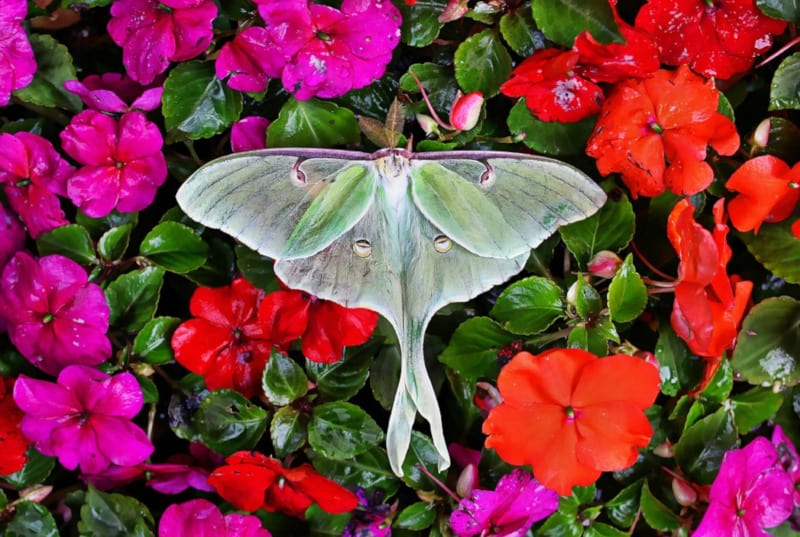
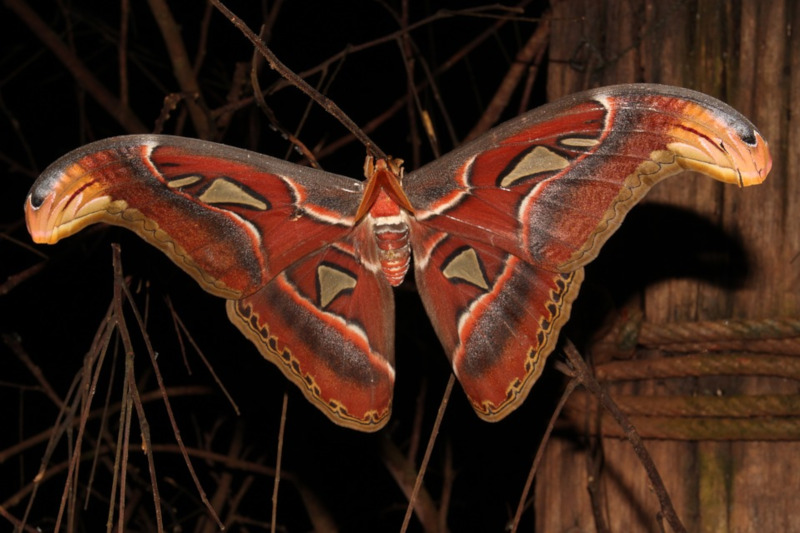
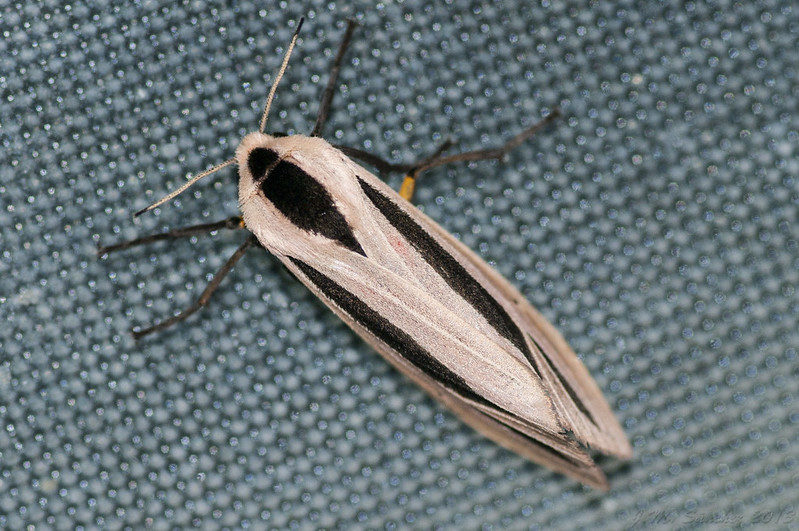
Creatonotos gangis Physical Description
Firstly, despite its astounding appearance, the remarkable Creatonotos gangis actually qualifies as a physically moderately small type of moth. The fascinating species does display sexual dimorphism, however. It nevertheless does so in a highly unusual manner.
Secondly, because of this, both genders of the fascinating species attain the same approximate physical size. As a result, mature adults attain an average wingspan of about 1.6 in (4 cm). Both sexes additionally develop brown forewings and white hindwings.
The distinctive of this Lepidoptera appearance does not simply end there, though. That’s due to the fact that both genders of the species also possess a dark streak on each wing. Individuals also usually possess a bright red abdomen, though yellow does occur.
However, the most startling physical attribute, and the source of the physical difference, belongs to the males of the species. That’s because each male has four large, extendable scent organs. When fully extended, these can even be longer than the body itself.
- Kingdom: Animalia
- Phylum: Arthropoda
- Class: Insecta
- Order: Lepidoptera
- Family: Erebidae
- Genus: Creatonotos
- Species: C. gangis
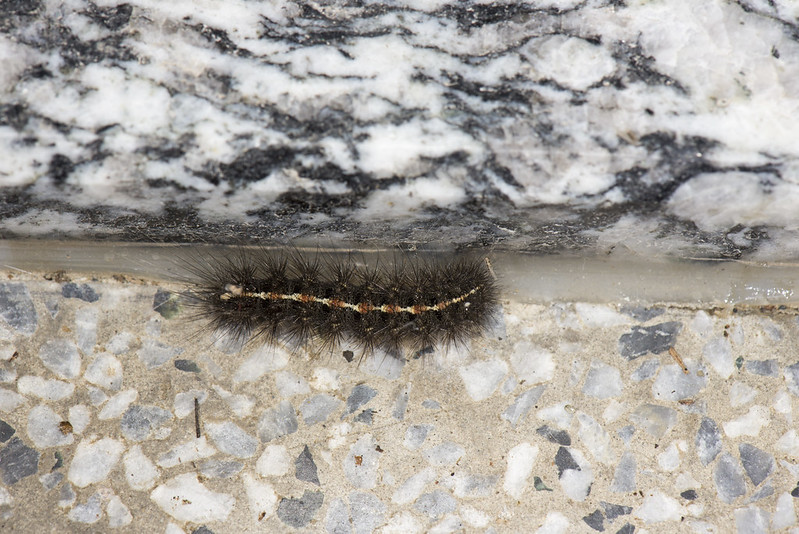
Creatonotos gangis Distribution, Habitat, and Ecology
First of all, the unique and highly fascinating Creatonotos gangis inhabits a comparatively broad swathe of the globe. More specifically, though, that range that includes parts of southeast Asia and Australia. It continues to be more prevalent in Asia, however.
There, furthermore, this zone of habitation includes parts of a total of seven countries. In the country and continent of Australia, though, its range remains more restricted. More precisely, this includes Queensland, and parts of the western and northern areas.
Unlike most related creatures, the awesome Creatonotos gangis further inhabits a fairly wide range of habitat types. The insect does, however, show a decided preference for regions with an abundance of fruit trees, and most especially pomegranates.
The huge scent glands of the male also allow it to attract females from extreme distances. That’s a decided evolutionary advantage. After mating, the female lays quantities of round, yellow eggs. These most commonly appear in rows on the underside of plant leaves.
Once hatched, the caterpillar form has a voracious appetite. It feeds on numerous species, of course, but apparently prefers pomegranate leaves. Yet it also consumes the foliage of plants such as rice, sweet potatoes, and sorghum in less damaging quantities.
Species Sharing Its Range


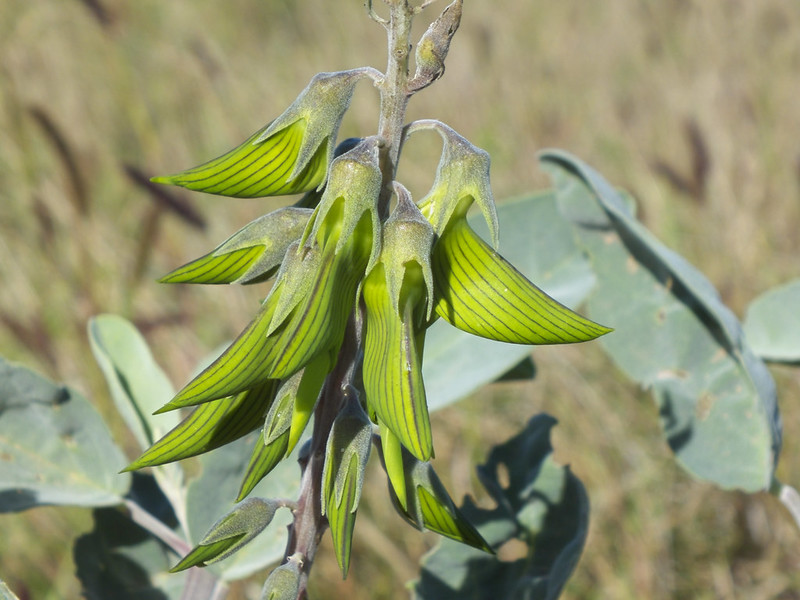
Check out our other articles on 7 Lesser Known African Mammals, Giant Oarfish, Stromboli, Boojum Tree, Kemps Ridley Sea Turtle, Stalk Eyed Fly, North Sulawesi Babirusa, Inaccessible Island Rail









Leave a Reply